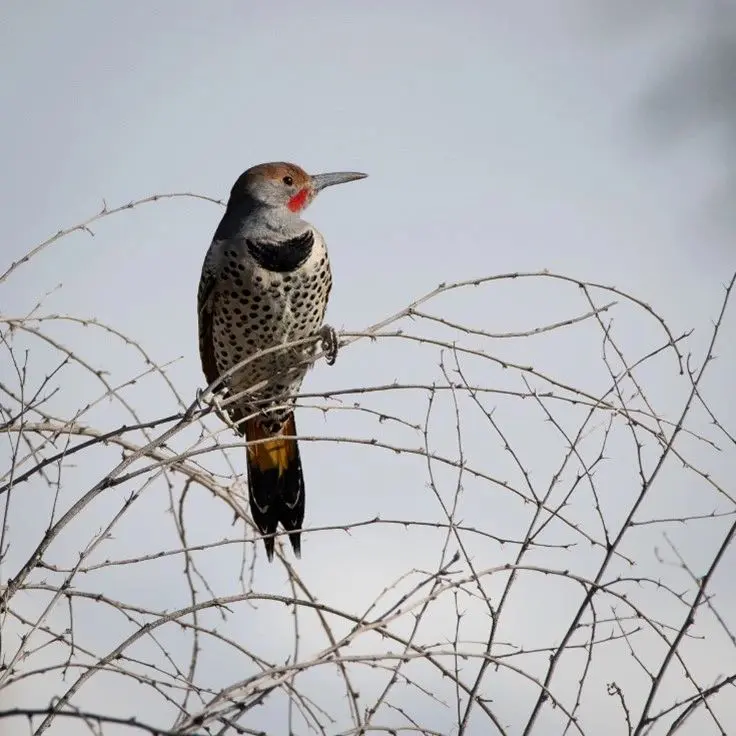The Northern Flicker

WHAT WETLANDS PARK WINTER VISITOR STANDS ON ITS HEAD TO GET LUNCH?
A flash of white on the rump! Red or yellow flashes on the undersides of the wings! Scarlet or black “mustaches” on male birds! A black “Cheshire Cat” grin at the throat! Leopard – spotted belly, barred back, and undulating flight! It must be a Northern Flicker (Colaptes auratus)!
These large woodpeckers are a sign of winter every year at Clark County Wetlands Park. Their bright white rump patches and the bright red or yellow undersides of their wings stand out vividly when they launch themselves into flight. The flickering white-red-white or white-yellow-white patterns may startle predators just long enough to give the bird a chance to escape. The “flickering” colors also give the species its common name.
Because of the color flickering and the undulating flight, we usually spot Northern Flickers first leaving a perch, landing, or in the air. Watching them in flight is a treat. But, an even bigger treat awaits those with the patience to blend into their surroundings and watch the birds as they feed.
Unlike other woodpeckers, flickers forage mostly on the ground. This is reasonable since their favorite food is ants. In[CC1] fact, forty-five percent of the Northern Flicker’s diet is ants, a higher percentage than any other North American bird. To round out this rather solitary menu, the flickers catch other insects in flight, and enjoy a variety of fruits, nuts, berries, seeds, and grain. Sometimes, they visit backyard bird feeders for a snack.
When foraging for ants, flickers hop along, stopping to drill their bills straight down into the ground at almost a 90-degree angle. Depending on the prey at hand, they may pick lightly at the ground, or probe deeply, burying their sturdy, slightly down-curved bills all the way up to their foreheads. These deep probes make the birds look as if they are attempting to stand on their heads.
Watch for the white-red-white or white-yellow-white of Northern Flickers along the trails in the Nature Preserve during the winter months. You may be lucky enough to see one do a headstand!
– By Chris Leavitt, President; photo by David Walker
Please enjoy these YouTube videos.
Northern Flicker eating ants
Northern Flicker feeding
Northern Flicker in flight
Northern Flicker in flight
